#skeleton biology
Explore tagged Tumblr posts
Text
Skeleton Panda Sea Tunicate Appreciation Post!!! 💀 🐼 🌊
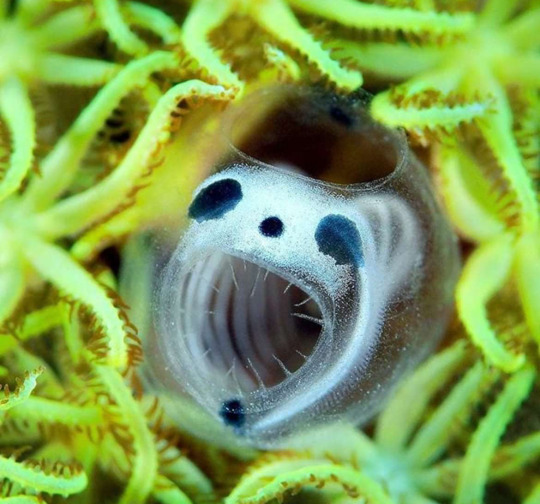
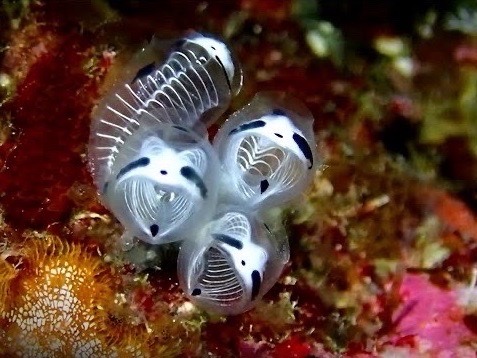

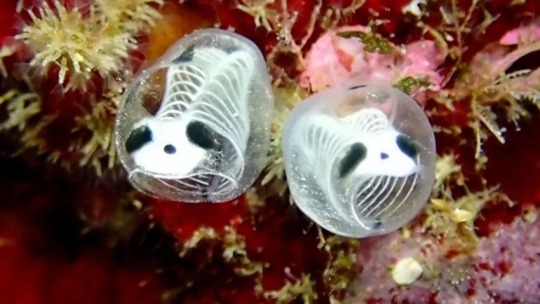


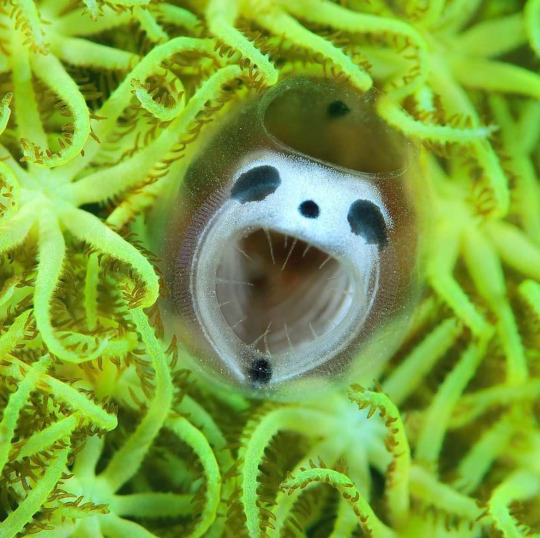
Clavelina ossipandae, the skeleton panda sea tunicate is a species of colonial ascidian, also known as sea tunicates, a group of sessile, marine filter-feeding invertebrates. Just some funky little guys!
First discovered near Kume Island in Japan by local divers, pictures of the animal attracted media attention in 2017. But they weren't given their formal taxonomic description until 2024
Love to sea it 🌊
#marine science#tunicates#science#biology#halloween#spooky season#skeleton#sea creatures#sea critters#marine creatures#marine life#photography#marine biology#sealife#ocean creatures#ocean#oceanposting#love to sea it#aquatic life#marine invertebrates#sea tunicate#chordata#invertebrates#sea life#sea animals#marine animals#ocean animals#ocean critters#fishblr#tunicate
6K notes
·
View notes
Text
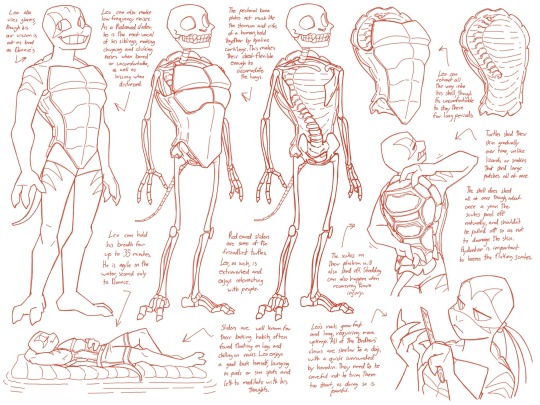
Leo skeletal anatomy! Click for better quality :)
The way most turtles actually fit into their shells is because their arms and legs are shaped to fit into the loose skin around the openings for their limbs, but on account of their human proportions, I just suspend my disbelief as to how mutant turtles could fit in their shells without the odd configuration to their organs that real turtles have. Real turtles have flat lungs that sit widely along their carapace, which is weird but cool. Turtles shed their scutes (the large flat scales on their shells and plastron) about once a year or if the scutes are damaged. The scutes have barely any skin between them and the bone, which is why turtle skeletons usually have the scutes on still, though they can pop off. The rest of the skin sheds regularly though, instead of in large patches.
For the brothers’, their respiration is much more human than turtle. Therefore, their lungs need to expand and contract with their diaphragm rather than just with their movement, so therefore they must have some flexibility to their chest. Some turtles, like box turtles, already have hinged plastrons, and softshell shells are mostly cartilage, so it’s not too far off to assume that there’s a bit of cartilage just to the upper plastral bones of the hard shelled brothers to give their humanoid lungs room to breathe.
Poor Leo. After the movie, one could assume he’s got a couple broken bones. It kind of made me morbidly curious as to how to describe injuries on a character whose skeletal structure is quite different from a human’s for my own writing!
Feel free to use as reference or disregard, these are just my own little speculations :)
[General][Raph][Donnie][Mikey][Splinter]
#rottmnt#rise of the teenage mutant ninja turtles#rise of the tmnt#rise leo#rottmnt leo#speculative biology#skeletons#there’s not a lot of easily digestible material I could find of turtles and how they work#it’s interesting to do research on species that are more obscure than things like cats or horses#my friend: how do you break a charcaters ribs if they don’t have any#me: good question I’m going to draw about it#t*cest dni
2K notes
·
View notes
Text

The Hangman’s Wyvern is a large, nocturnal scavenger found throughout most of the globe.
The males of the specie have large impressive tails that have a striking and somewhat ghoulish patterning from which they derived their namesake. The illusionary skeletal markings are quite elaborate and no two are the same.
These drakes get their name not only from the tail pattern but also for their opportunist scavenging which does include human remains. The Hangman’s Wyvern is also known as the Gallows Drake because of this. It is not uncommon to find them perched or circling graveyards or areas of execution.
#concept art#creature design#fantasy art#creature concept#concept design#monster#fantasy#dragons#speculative biology#happyhalloween#skeleton#jack skellington
601 notes
·
View notes
Text

Drawing of a frog skeleton I did for my field sketching class
#artists on tumblr#drawing#nature art#nature sketching#field sketching#biology#anatomy#scientific illustration#frog#skeleton#my art
243 notes
·
View notes
Text


VAMPIRE KILLER FROG 🐸 🩸 (Nosferas Venari) Also known as Eztlicueyatl (Blood frog) or Tzinacamiztli (Bat death)
"A voracious amphibian-like species that adapted to hunt vampires. Its origins are vague and shrouded in mystery but an hypothesis suggests it could have been the result of selective breeding or nature’s “way” of dealing with the ecological imbalance vampires caused through centuries. Whichever the reason, one thing is clear: these hunters evolved in such fashion they became the night creatures’ bane.
Every bodily function feels almost engineered in eerie accuracy to strike at their very weaknesses- such as the tip of the tail (bone) they sharpen to resemble a stake, the muscle reflexes and athletic composition to catch up with their supernatural agility and a blackened coat which absorbs the bouncing light of nocturnal eyes paired with drastically lowering their body temperature (essentially becoming ‘invisible’ in the dark). Although they may prefer a stealthy approach they show no fear if they must engage in direct confrontation. There’s no sexual dimorphism albeit females are more common in nature compared to the rare male sights and not much is known about the behavior with others of their kind as they are solitary. But such is their intelligence that it would be safe to assume they study- and learn from both their prey’s movement and environments given the observations on this beast.
Worse yet- for vampires- they have more cunning ways of hunting for a meal.
The Nosferas frog is able to produce a unique secretion mix of blood, mucus and gastric fluids which is all over their bodies- from the inside and out. More interestingly they have a way to regulate its acidic components to either use as a melting gag weapon, dissolving and trapping pathogens or simply increasing its PH. Essentially, the body is extremely moldable thanks to this odd slimy substance that makes it almost feel like liquid and comes in handy in various situations such as protecting their brood eggs by swallowing them. It is also the most crucial function in the capturing of their vampiric prey as the scent of this bloody secretion lures them and other carnivores in. Once they come in sight they eject their multiple stomachs through gastric eversion to latch onto the victim and begin the digestion early. The vampire skulls are then proudly kept and displayed given the very transparent look of the lower side of the body.
Despite it being a terrifying organism by all means, they have shown vague signs of affection toward humans- some of whom have tamed and kept them as exotic guardian pets against the supernatural plague. In most areas of the land however they underwent a ban given their dangerous and unsettling nature."
#digital art#art#digital illustration#aesthetic#concept art#creature#digital drawing#fantasy#creature concept#creature art#creature design#monster#frog#aquatic#sea creatures#nature#wildlife#speculative biology#speculative evolution#spec evo#amphibian#monster art#saltwater#vampire#salamander#blood#biology#skull#skeleton#tendrils
288 notes
·
View notes
Text
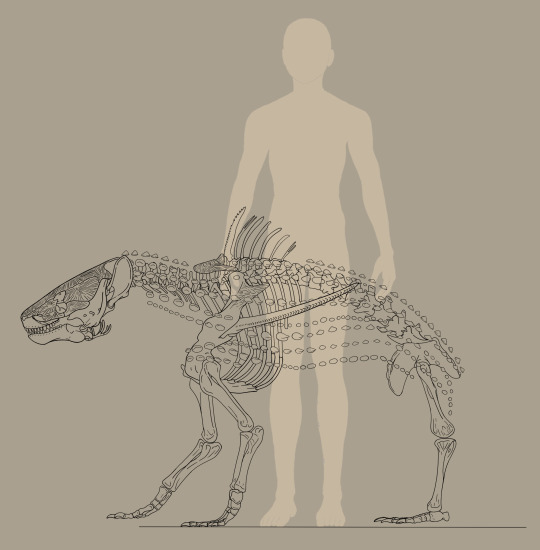
Atterran Terrestrial Catfish (also known as whisker fish) are a lineage of non-teleost fish that have successfully transitioned to terrestrial life, like the ancestors of tetrapods on Earth and Atterra.
Like Earth, the oldest currently known catfish fossils date back to the late cretaceous period of Atterra, which, according to Old World archives, was found in the western continent. While the original fossil was lost during The Fall, the surviving data indicates that the fossil was from a species of armored catfish with similar morphological adaptations to modern-day armored catfish. Atterran biologists theorize catfish evolved between 100-110mya at the beginning of the late Cretaceous period or near the end of the middle Cretaceous period. Unlike the terrestrial teleost fish lineages, the ancestors of the terrestrial catfish did not develop within the hollows of Atterra but instead on the evolved deserts of the surface. These basal catfish would move between bodies of water across the desert sands, like the armored catfish of Brazil, to find food and reproduce. Whenever these fish could not find a suitable body of water, they would hunker down in the mud and hibernate until the wet season arrived, bringing more pools for the fish to inhabit.
Over time, during the late cretaceous, as the desert slowly began to become drier and the catfish had to traverse farther and farther to find suitable pools of water, the catfish's branchial tissue behind their gills slowly became more robust. Taking up larger portions of the body behind the head as the gills began to become smaller from less time spent in water. At the same time, the skin of the ancestral terrestrial catfish became thicker and more resistant to water loss, allowing the catfish to spend more time traversing the dunes in search of water or cool places to hide. Eventually, the armor plating of the ancestor's body became less rigid and sparser, allowing the catfish more flexibility as it raffled across the desert, leading the fish to incorporate its tail into its locomotion and utilize it as a powerful springboard to hop forward. As the catfish's gait and locomotion improved, the brachial tissue moved down into the fish's chest cavity to form primitive lungs. The gill arches began to ossify into the ear and hyoid bones to aid the fish in detecting predators and swallowing food. Alongside the new ear bones, the gill cover slowly became less ossified and flexible to turn into external ears.
Terrestrial catfish are believed to have survived the end cretaceous extinction event on Atterra by being generalists that would eat anything they could fit in their mouths and being just armored enough to ward off many potential would-be predators. Like their ancestors, terrestrial catfish still possess mobile venomous dorsal and pectoral spines to ward off predators should their armored hide prove not enough to deter would-be predators. The stings of terrestrial catfish are excruciating and often cause redness and severe swelling around the area of the sting. In some species, tissue necrosis may also occur, making them a dangerous prey item many predators approach with caution when hunting.
#art#artwork#digital art#drawing#illustration#creature#creature art#creature design#monster design#monsters#fantasy art#my art#drawings#digital 2d#digital illustration#digital drawing#digitalart#clip studio paint#artist#sketches#sketch#doodle#skeleton art#skulls#anatomy#fish#speculative ecology#speculative biology#speculative zoology#speculative evolution
142 notes
·
View notes
Text

Saw the new @humansbgone episode and had to doodle a possible skeleton of the demivolute polar bear
The idea with the arms is that they’ve joined the mandibles in acting as a second jaw and the claws act as extra more dexterous teeth to better shovel food in its mouth. Unfortunately no skull sutures because bear skulls with labeled parts aren’t easy to find.
This took too long to draw because my tablet is getting old and so ArtStudio gets glitchy and sometimes crashes when I resize and adjust the position of selected things. I need to get a new tablet soon.
#sketches#skeletons#skeletal#speculative evolution#speculative biology#speculative anatomy#skulls#sketch#humans b gone
55 notes
·
View notes
Text

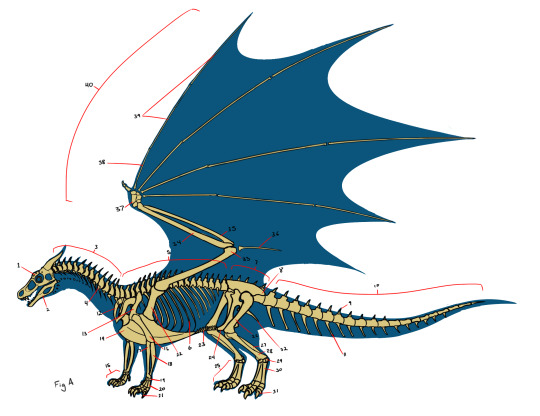
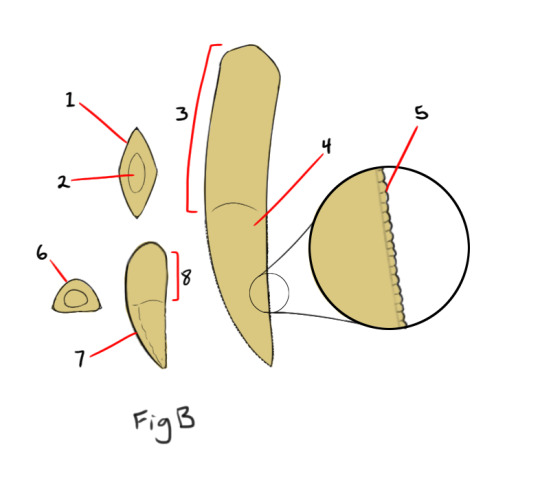
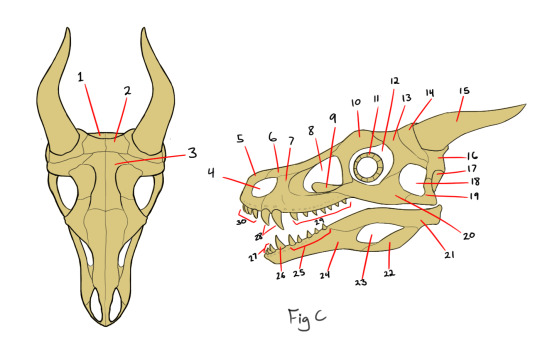
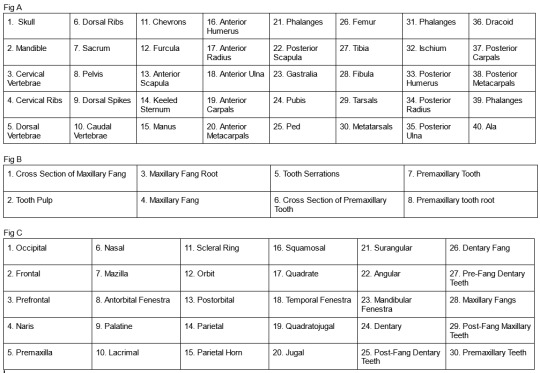
Dragon skeletal anatomical diagram because I love taking on projects I and only I will enjoy. The idea is they evolved from theropod dinosaurs. Don't ask me how a tetrapod developed 6 limbs, I don't have answers for you.
Paleoheads feel free to nitpick any anatomical minutia I might have gotten wrong, I'm so here for it.
Inspired but not strictly following the dragons in the Eragon series.
Footnotes below the cut:
Fig A:
Spent a good while debating how to differentiate the naming for the forelegs and the wings, since they are technically duplicates of the same structure. I settled for "anterior" for the legs and "posterior" for the wings, but I also considered M. for "manus" referring to the legs, and A. for "ala" for the wings. ¯\_(ツ)_/¯
5. Dorsal Vertebrae 1-3 do not have dorsal spikes.
9. Dorsal spikes sprout from the spinous process and are surrounded by a kerotenous sheath. They become proportionally taller with age.
13. Anterior scapula is fused to the sternum and forms a ball-and-socket joint with the anterior humerus at the base.
14. Large keeled sternum for the attachment of flight muscles.
22. Posterior scapula is also fused to the sternum but the ball-and-socket joint is at the distal end.
36. The dracoid bone (or false finger) is a unique bone to dragons that I made up. It has a bony core and cartilaginous sheath. Inspired by the pteroid, a bone in pterosaurs, which also supports the wing membrane, but in a different location.
Fig B:
Dragons have anywhere from 46-54 teeth, but will always have 10 premaxillary teeth, four maxillary fangs (two on each side), 8 pre-fang dentary teeth, and 2 dentary fangs. The fangs slot into each other for gripping prey. Teeth are named after the bone they grow out of. Like other theropod dinosaurs, teeth are regrown throughout an individual's life.
1. Cross section of maxillary fang. Fangs are laterally compressed like blades for piercing and shearing off flesh.
4. Dragons have two maxillary fangs, with the first one being larger and visible when the mouth is closed. This "snaggle tooth" gets proportionally longer each time it regrows.
5. All dragon teeth have serrations.
6. Like T-Rex and other theropods, premaxillary teeth (and pre-fang dentary teeth) have a D-shaped cross section for delicately picking flesh from bones. Serrations are on the lateral sides and not anterior-posterior, like the fangs and post-fang teeth.
Fig C:
4. Dragons have proportionally enormous nostrils due to the high oxygen demands of flight.
8. The antoribital fenestra (and other openings in the skull) are very large in dragons to reduce the weight of the skull. This makes flight easier at the expense of bite force. While still capable of a formidable bite, it is no where near the power of a T-rex.
10. Large lacrimal bone gives the dragons their characteristic brows, and provides support for large lacrimal osteoderms.
11. Dragons have proportionally enormous eyes and excellent long-distance binocular vision.
14. Dragons horns are modified growths from the parietal bone, and thus called parietal horns. The supratemporal fenestra (holes most theropods have on the top/back of the skull) in dragons has closed to provide support for the parietal horns.
15. The parietal horn forms a bony core with a kerotenous sheath, much like their dorsal spikes (and goat horns). Grows continuously with age.
Thanks for reading!
#acy arts#my art#dragon skeleton#speculative biology#speculative zoology#dragon#the inheritance cycle#eragon#saphira#anatomical diagram#still workshopping the latin species name. kinda leaning towards Endunarus Draco
74 notes
·
View notes
Text
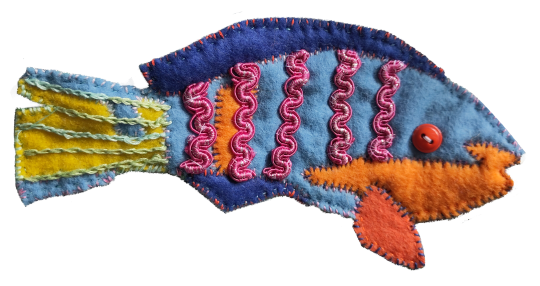

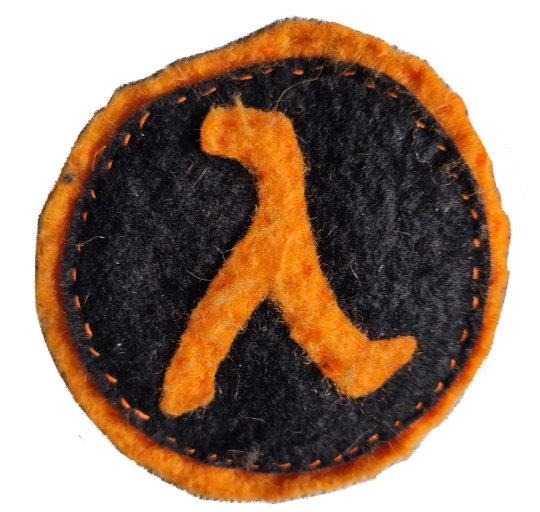


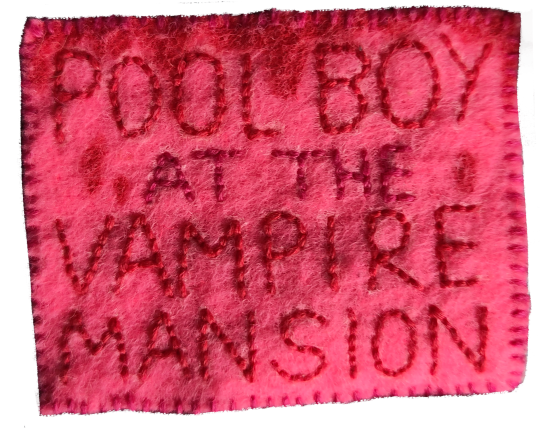
my collection of handmade felt patches so far :)
#patches#patch#battle jacket#felt#embroidery#parrotfish#biology#bacteriophage#half life#mcr#my chemical romance#craft#skeleton#punk
622 notes
·
View notes
Text

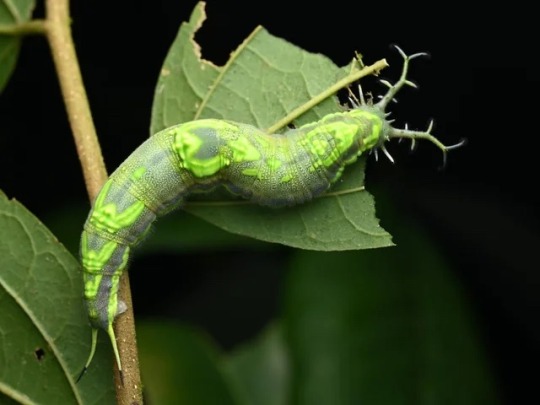
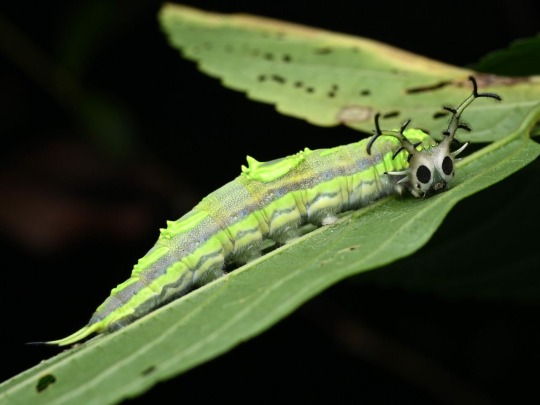
Yellow Pasha Butterfly Caterpillar (Herona marathus)
#insects#caterpillar#pasha butterfly caterpillar#insect#entomology#bugs#critters#naturecore#photography#nature photography#nature#science#biology#bug#bugblr#butterfly#skeleton#spooky season#creepy crawlies#dark academia#creepy aesthetic
684 notes
·
View notes
Text

Donnie skeletal anatomy! Click for better quality
Alright so softshell turtles right. They funky. It’s a lot more obvious that their shells are part of their ribs, as you can actually see the faint outline of their fused vertebrae and ribs on their shells. The reason their shells are so soft is because the edges and much of the lower half of their shell is actually all just cartilage and skin. Their plastron are weird, because the bone plates are largely separate and pointy, held together by harder cartilage the same way human ribs are attached around the sternum.
Donnie was weird to figure out on account of the cartilage lower half of his softshell, but I tried to compromise with his lower back vertebrae being unfused to still allow for the higher mobility required for his waist. Another fun fact about softshell is that they don’t actually have scutes or scales, but because of the look of his plastron and consistency with his brothers in the show, I’m just going to pretend that Draxum mixed in some DNA to let him grow scales for extra protection even if he has less coverage than his brothers. He can “breathe” water by absorbing oxygen through the skin of his throat, not actually by inhaling it. While most turtles can do this to a point, soft shells can stay quite active while doing so.
Personally I like to think of Donnie’s softshell as both a weakness and a strength depending on the situation! While more vulnerable, his skin can heal faster than scutes, and if he sustains blunt damage to his shell he can more easily disperse the force of it because of the give to his cartilage, rather than have the force crack his shell and cause a much more traumatic injury. Kind of like how seatbelts have some give to them to ease into a stop instead of giving someone whiplash.
Just some personal head canons! Feel free to disagree or expand upon :)
[General][Raph][Leo][Mikey][Splinter]
#rottmnt#rise of the teenage mutant ninja turtles#rise of the tmnt#rise donnie#rottmnt donnie#speculative biology#skeletons#looking up what a softshell turtle plastron bones look like was crazy#I genuinely had no idea how the bones translated to the living turtle#Donnie could really use some torso armor tho just saying#t*cest dni
2K notes
·
View notes
Photo
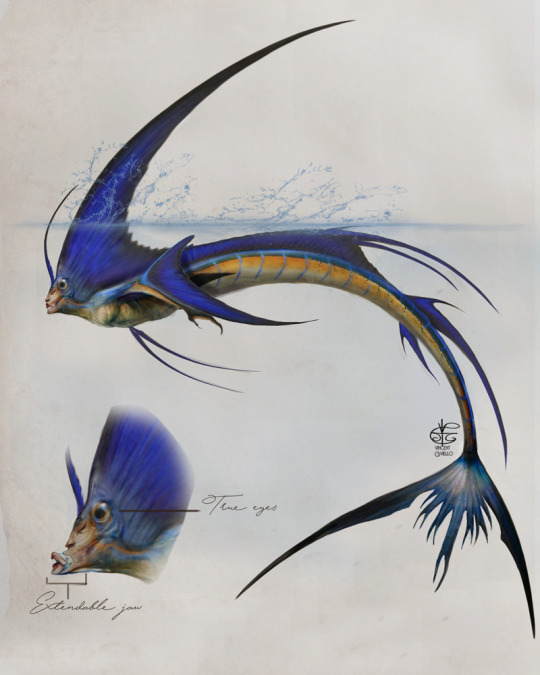
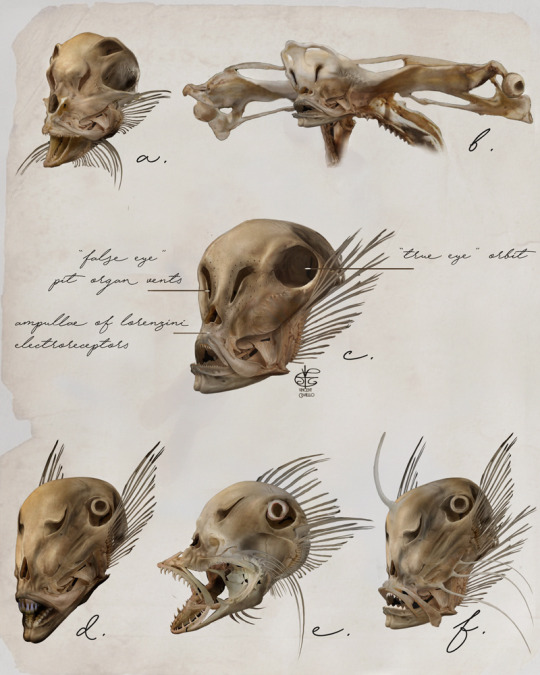
The Sailor Mermaid gets it’s name for not only it’s impressive head sail but also it unique mode of transportation. Arguably one of the fastest of the Sirena family, the Sailor Maid or sometimes referred to as the Sail-Finned Maid will use the large fin much like a sailboat to aid in traveling vast distances in search of food. Their streamline bodies paired with this large sail make for a formidable predator. Mating pairs, using their head sails as barriers will often corral schools of fast moving prey between in order to feed.
Slide two: An example of the dimorphism found in the skulls of the Sirenia order.
#Mermaids#mermay2023#drawmermay2023#mermay#sea creatures#mythological creatures#creature design#Concept Design#concept art#skulls#skeleton#speculative biology#Speculative Evolution
4K notes
·
View notes
Text


Workin' on something fun! Got lots of Speculative Biology headcanons for this guy cooking up! And perhaps a video soon to come >:)
#ben 10#ben ten#ben10#b10#benten#ben 10 series#ben 10 fanart#ben 10 fandom#ben 10 classic#ben 10 alien force#ben 10 ultimate alien#ben 10 uaf#ben 10 omniverse#ben 10 xlr8#xlr8#alien anatomy#alien species#biology#ben 10 alien biology#alien biology#speculative biology#skeleton#skull#skull art#my art#art#digital art#artists on tumblr
122 notes
·
View notes
Text

We put SO MUCH work into the digital edition of Bones Deep. Glad to see that work paid off!
You can grab a copy for yourself here: https://www.technicalgrimoire.com/bones-deep
#tabletop#indie ttrpg#ttrpg#osr#indie#rpg#troika#skeletons#underwater#marine biology#review#accessibility#pdf
170 notes
·
View notes
Text

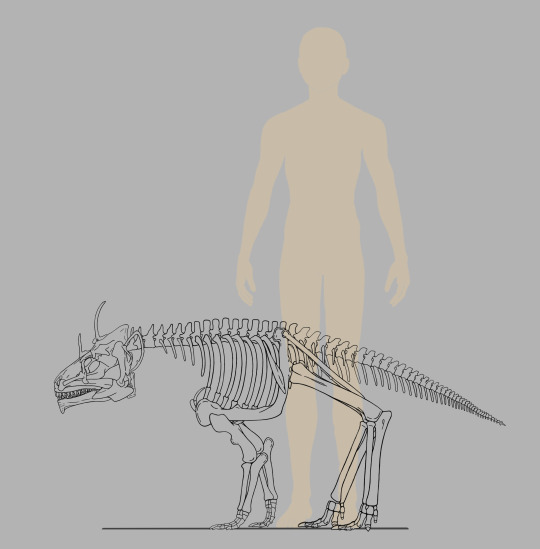
Aggression/ Danger to humans: High/Very High– High
Element/ Ailment: None
The Firebacked Loprunner, or t’ylyxcj’ cj’ysj mlozjuv rhac’ (t’ylyxcj ‘it runs’ + cj’ysj ‘in a lopping manner’ + mlozjuv ‘of fire’ + rhac’ ‘back’) in Dhënuvgöm, is a species of terrestrial anglerfish that inhabits forests surrounding karst regions on the northeastern continent of Atterra. Named after the loping strides of its back legs when walking, the Firebacked Loprunner is an ambush predator that hunts small vertebrates and anthropods (arthropods that have developed closed circulatory systems and internal chitinous skeletons). On the surface, the Firebacked Loprunners are mammal specialists, taking advantage of the red color blindness many mammals possess to sneak up on their prey.
When attacking, Loprunners gallop toward their prey, snapping at the prey's neck. When biting, Loprunners extend their bottom jaws forward with a special hinge bone connecting to the back of the mandible bone and the animal’s temple. Once the bottom jaw is fully extended, the top jaw will move downward to meet the rising mandible before pulling backward to its resting position. This creates a biting mechanism like a shark’s, putting incredible pressure on whatever is caught between the Loprunner’s jaws. In addition to their strong bite, Loprunners also sport two rows of teeth on the top and bottom jaw that keep prey securely trapped in their jaw. After killing their prey, Loprunners either swallow it whole or tear it into more manageable chunks, depending on its size.
Firebacked Loprunners are solitary, extremely territorial, and aggressive. They are known to attack humans and Hakdor with little to no provocation. When faced with a threat or an intruder in its territory, Loprunners bare their teeth and growl loudly. Their growling is accompanied by heavy exhaling from the vents (exhaling nostrils) underneath the animal’s back legs. Should this warning not be heeded for some reason, the Fireback Loprunner will charge the opponent, attempting to bite and savage them with its powerful jaws. Aggression towards their own kind is also common. Fights between Firebacked Loprunners are brutal, as both bite and claw at their opponent to drive them out of the territory. It is not unheard of for such altercations to end in the death of one or even both animals in extreme cases. Loprunner skin is tough and leathery for this reason, and their ‘fur’ (evolved from skin appendages called spinules like Earth’s Hairy Frogfish) is bristly to the touch like boar’s hair.
Unlike many other vertebrates, there is no sexual dimorphism between male or female Loprunners. Identification of the opposite sex is determined through smell. During mating season in early summer, Loprunners therefore sniff the boundaries of other territories to find one holding a potential mate. Once found, the seeking Loprunner requests to mate by entering the other’s territory, holding their head high so their horns are on full display. It is extremely important that visitor strides confidently and announces their presence with low-frequency bellows to indicate a desire to mate, otherwise, their intrusion will be taken as a challenge. Hearing their approach, the resident Loprunner will approach the visitor to inspect them and judge their overall health.
To judge their potential partner’s fitness, the resident Loprunner eyes the size and shape of the visitor’s horns, the redness of their skin, and the luster of their pelt. If the visitor fails the initial inspection, the resident Loprunner lets out a loud huff and turns away, giving the visitor their only chance to run out of their territory unscathed. Otherwise, both animals proceed to display threats at one another. Should either flinch from the threat displays or faux snapping, they will automatically be considered unacceptable partners. Unworthy visitors are chased off, or even killed in rare cases while unworthy residents are snubbed. If all goes well, the two will mate and part ways immediately after.
Females either make a mound in their territory or, if residing in the Hollows, a small nook not immediately on a game trail to lay their eggs. Their clutch typically consists of 20 to 30 leathery eggs that incubate for 9-10 weeks before hatching. Once they’ve emerged, Loprunner hatchlings scatter or even devour their siblings if they are too weak to leave the nest. The hatchlings are brownish-yellow and fully covered in fur. Hatchlings hunt within the territories of adults, making sure to avoid them for 5-6 years before they reach maturity. From there, they either find their own territory or take over another Firebacked Loprunner’s territory.
All Loprunners molt once a year, shedding old skin and even losing shallow scars. The only parts of their body that do not shed skin during maturity are the parts covered in their coarse fur. The age of adolescent Loprunners can be easily guessed based on how much of their body is still covered by their fur. While maturing, young loprunners shed even their fur with their skin during each molt, with less and less fur growing back until they reach their adult covering that does not molt off. In the wild, Firebacked Loprunners live up to ten years and live between 15 to 20 years in captivity with some individuals even living up to 25 years of age.
#art#artwork#creature#creature art#creature design#digital art#drawing#illustration#monster design#monsters#creature drawing#fantasy creature#monster#2d art#digital 2d#sketch#sketches#skeleton art#fantasy#fantasy art#speculative zoology#speculative biology#speculative evolution#digital illustration#digital drawing#digital painting#my art#alternate universe#ecology#creative
37 notes
·
View notes
Text

Skeletal of the strangler giant from the dragonslayer codex. Kinda wish I used a thinner line thickness.
It’s basically built like a gibbon trying to be a honse, but with thumbs and perpetually shrugging shoulders apparently.
#speculative evolution#speculative biology#speculative anatomy#skeletons#skeletals#dragonslayer codex#strangler giant#sawyer lee#speculative zoology
43 notes
·
View notes